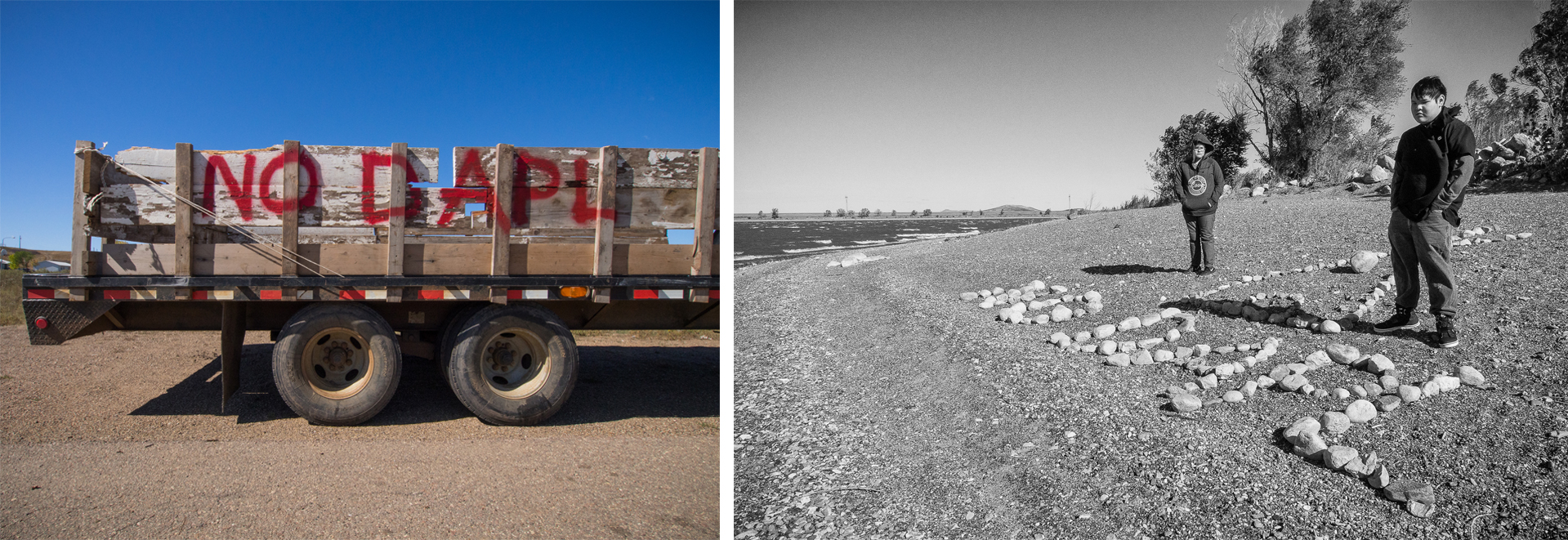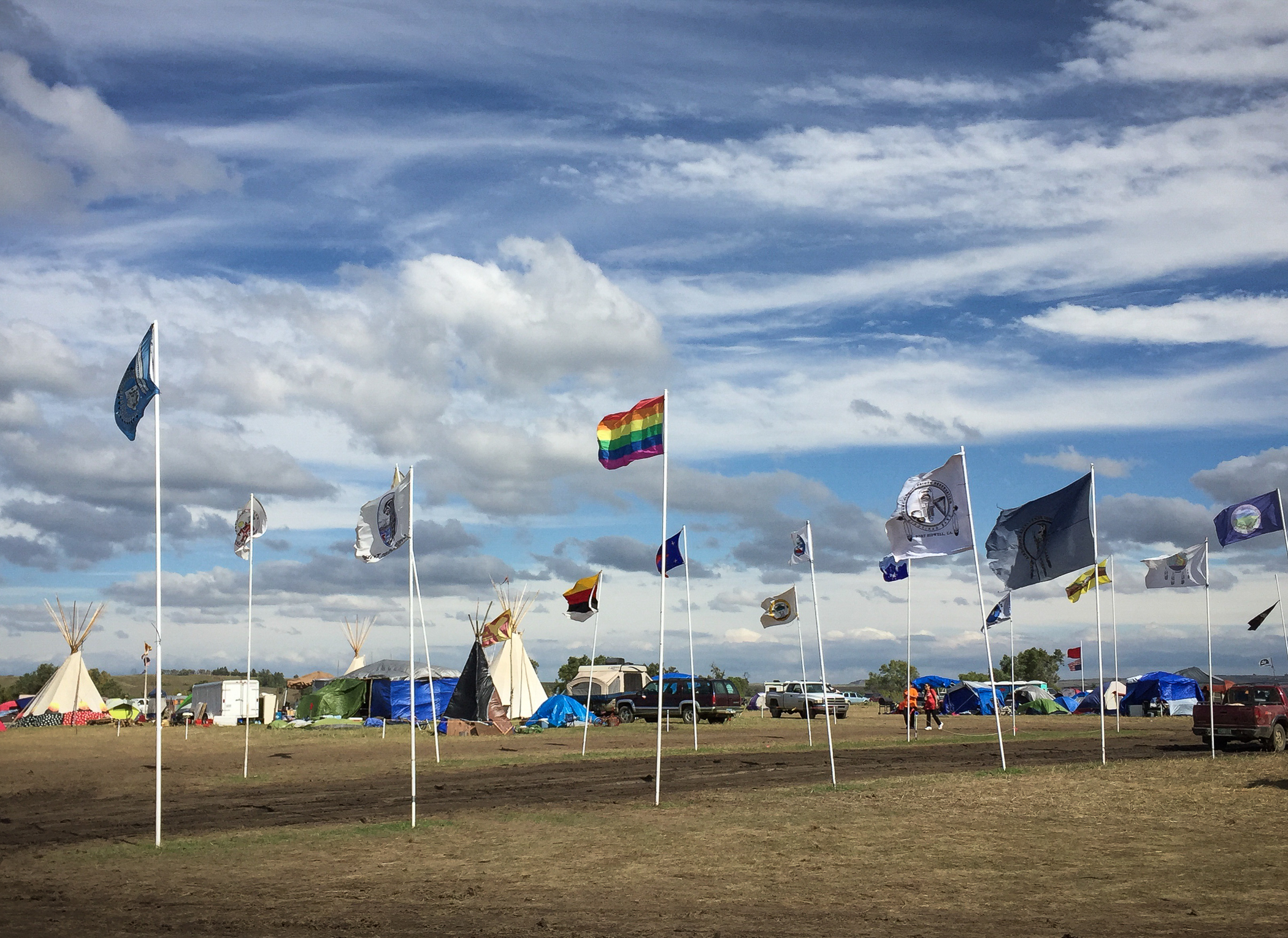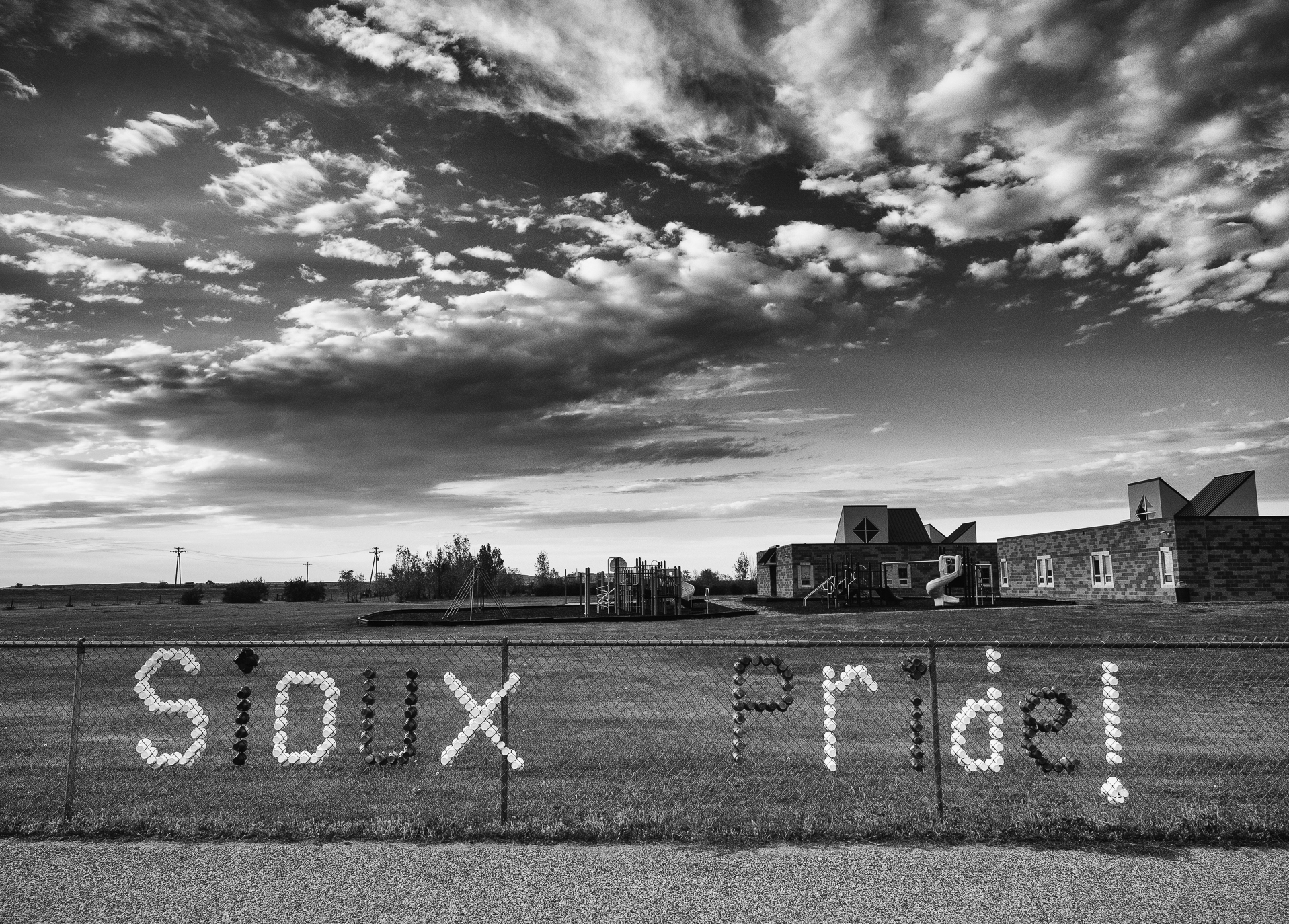Standing Rock Controversy
The photographs below were taken on the Standing Rock Sioux Reservation in South Dakota.
Despite many hardships, tribal identity and pride remain strong. When the Wakpala public school burned down, the Lakota community raised money to build a modern, K-12 grade school. Pride in who they are is important to the Lakota people, especially when negative stereotypes are developed about Native Americans and reservations by non-Native neighbors.
Discussion and Writing Questions
|

Right: "No DAPL" Sign at Lake Oahe: What’s Our Future? Standing Rock Reservation, South Dakota,
2016 by Sue Reynolds
The painted and hand built signs in the photographs above protest construction of the Dakota Access Pipeline (DAPL) near the water supply of the Standing Rock Reservation. The backstories of these two photographs help set the scene for current protest and conflict between the Lakota Sioux, who live on the Standing Rock Reservation, and the U. S. Government over the pipeline project.
Note and Discuss:The protest sign painters -- Native people prefer the term water protectors -- of the truck above chose the colors red and white, and photographer Sue Reynolds photographed this scene set against a blue sky. What do these three colors symbolize to you? What statement do you think the colors and subject of this photograph make to the U. S. Government? These photographs symbolize the Lakota people’s uncertain future, the ongoing breaking of promises the government made to the Sioux regarding their land and resources, and set the scene for discussion of the Dakota Access Pipeline controversy. Discussion and Writing Questions
Note: To prepare for discussion/writing, older students can research this topic in advance. |
Most recently, world-wide attention was drawn to a standoff between the Lakota tribe of the Standing Rock Reservation located in North and South Dakota and the U. S. Government over protection of the reservation’s drinking water, which comes from the Missouri River. Originally, the Dakota Access Pipeline (DAPL) was scheduled to be constructed near Bismarck, which is North Dakota’s capitol, but Bismarck’s citizens didn’t want the pipeline close to their city because oil pipelines have broken and they feared a break would pollute their drinking water.
To accommodate Bismarck’s concerns, the pipeline’s planned path was moved away from the city. When the new path for the pipeline revealed that it would run under the Missouri River, near the North Dakota portion of the Standing Rock Reservation, which is where the reservation gets its drinking water, the Lakota people living in the area became alarmed. The tribe began to protest this several years ago, drafting an online petition to block construction of the pipeline in their area. The Lakota were attempting to protect the source of their drinking water and the preservation of their sacred sites and burial areas against oil pollution that would severely damage the area if the pipeline broke.
As the world watched the Standing Rock controversy, the Lakota were joined by other tribes and indigenous peoples worldwide, as well as other U. S. and international peoples at several encampments, some sitting directly in the pipeline’s path.

Read through Victor Charlo’s poem below.
Click here to view poem full screen
Elder’s Week
We are Indian.
We make our stand.
But this year we ask elders,
moon, stars, old times
to remind us how we once
were. Drum talks to clay cliffs
that watched our blood ride
before time. How was it?
Songs ring memories
like dark water.
Put Sey (Good Enough), by Victor A. Charlo. Available on Amazon.
Discussion and Writing Questions
|
Local law enforcement used rubber bullets and water hoses to try to force people to leave the encampments but failed. Social media and news outlets took up the tribe’s cause and thousands of people from across the United States traveled to Standing Rock to show their support, bring supplies, or join the encampments. Support groups included U. S. veterans, representatives from Black Lives Matter and many religious organizations, celebrities, every-day Americans and internationals. After the onslaught of support for the Lakota protest, President Obama agreed to pause construction and look for an alternative route for the Pipeline that would not endanger the reservation’s water supply.
The Lakota and the world remain wary and on alert, as the Standing Rock victory was short-lived. Newly elected U. S. President Trump rescinded the decision to halt construction of the pipeline and find an alternative route, which means resistance and struggle will follow.
Note: This current events topic can be researched and followed. |
Over much of its history, the U. S. government has lied to, relocated, punished, disrespected, and killed Native Americans and done everything in its power to abolish their religion and culture. Although their history has included many discouraging, horrific and sad events, Native American pride endures.
What is promising is the world-wide support the Lakota people received during the 2016 Standing Rock controversy. More Americans, in particular, are standing with Standing Rock and will continue to do so as the pipeline construction plan continues. Progress is never a straight line, but support for Standing Rock and resources such as this can bridge the gap of understanding between Native Americans and non-Natives.
Discussion and Writing Questions
|
Click here to access our extensive library of related websites, readings, videos, and more.

